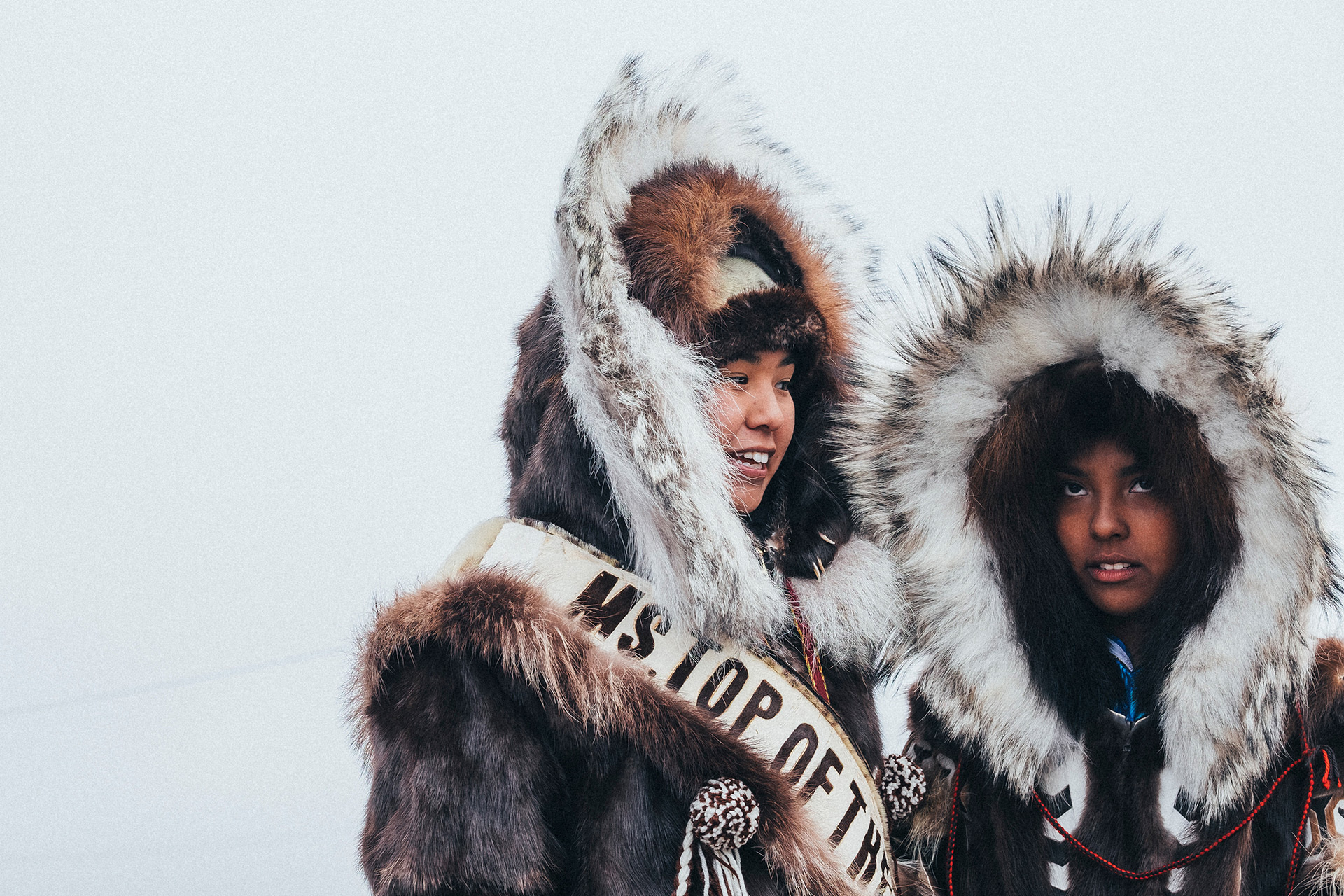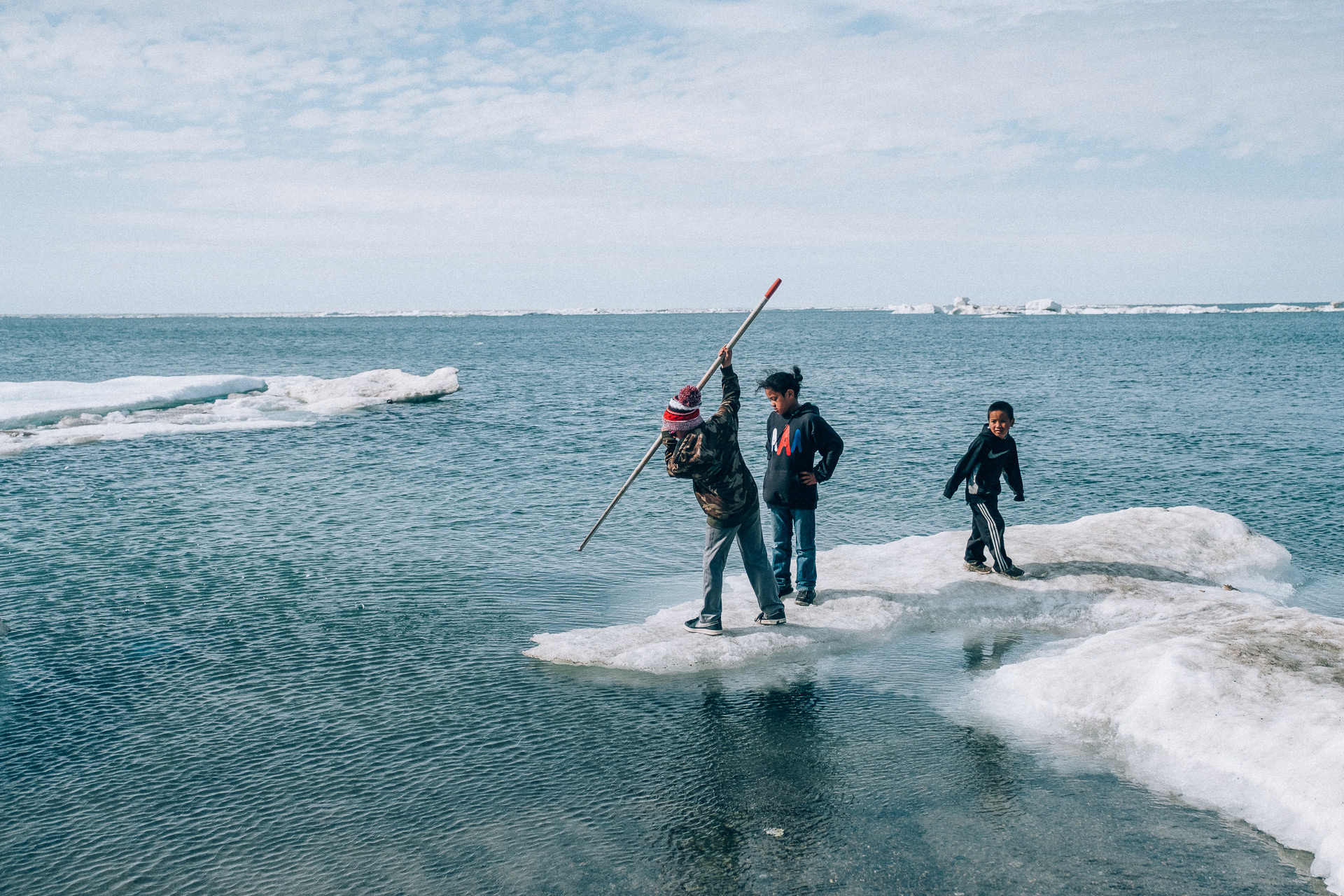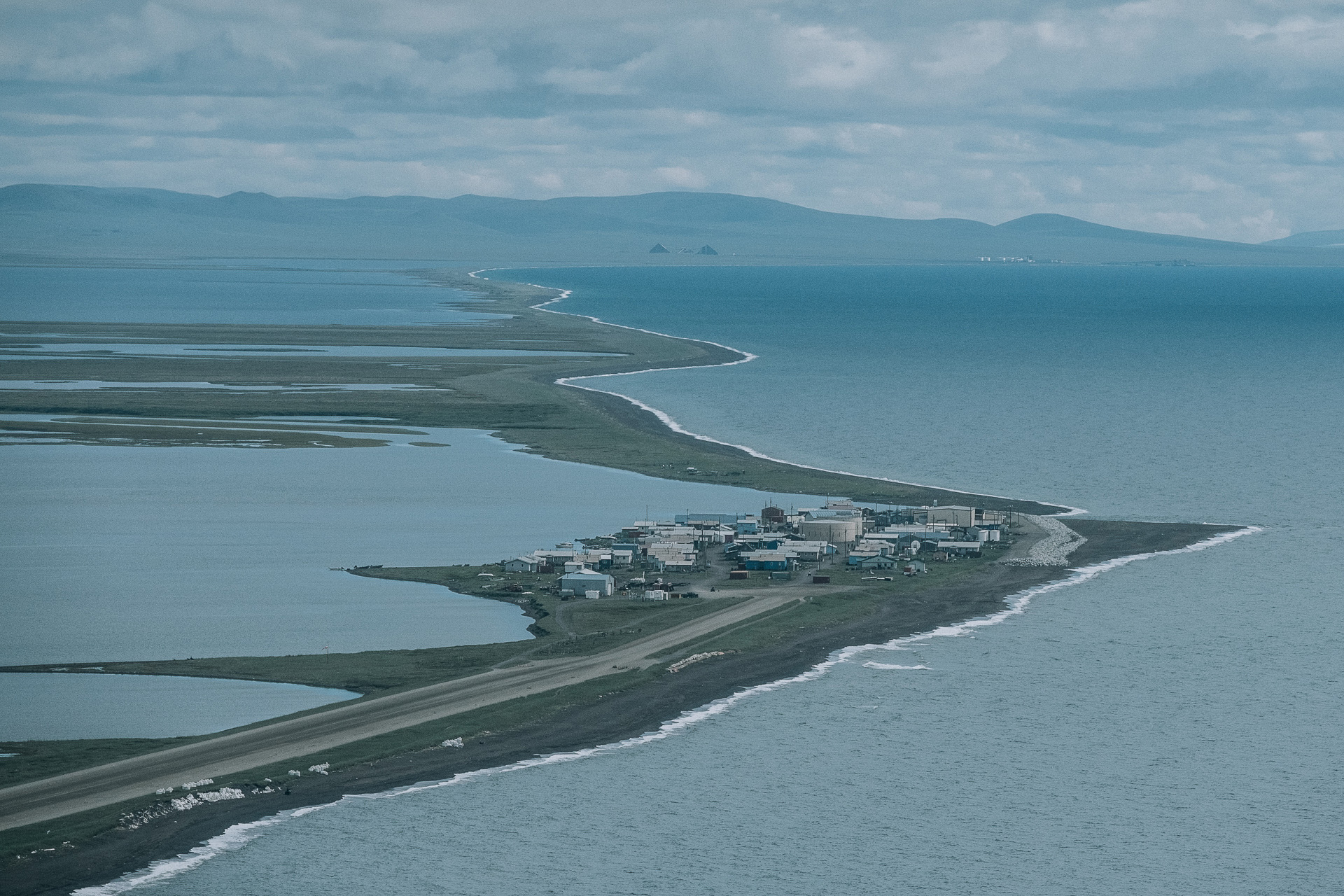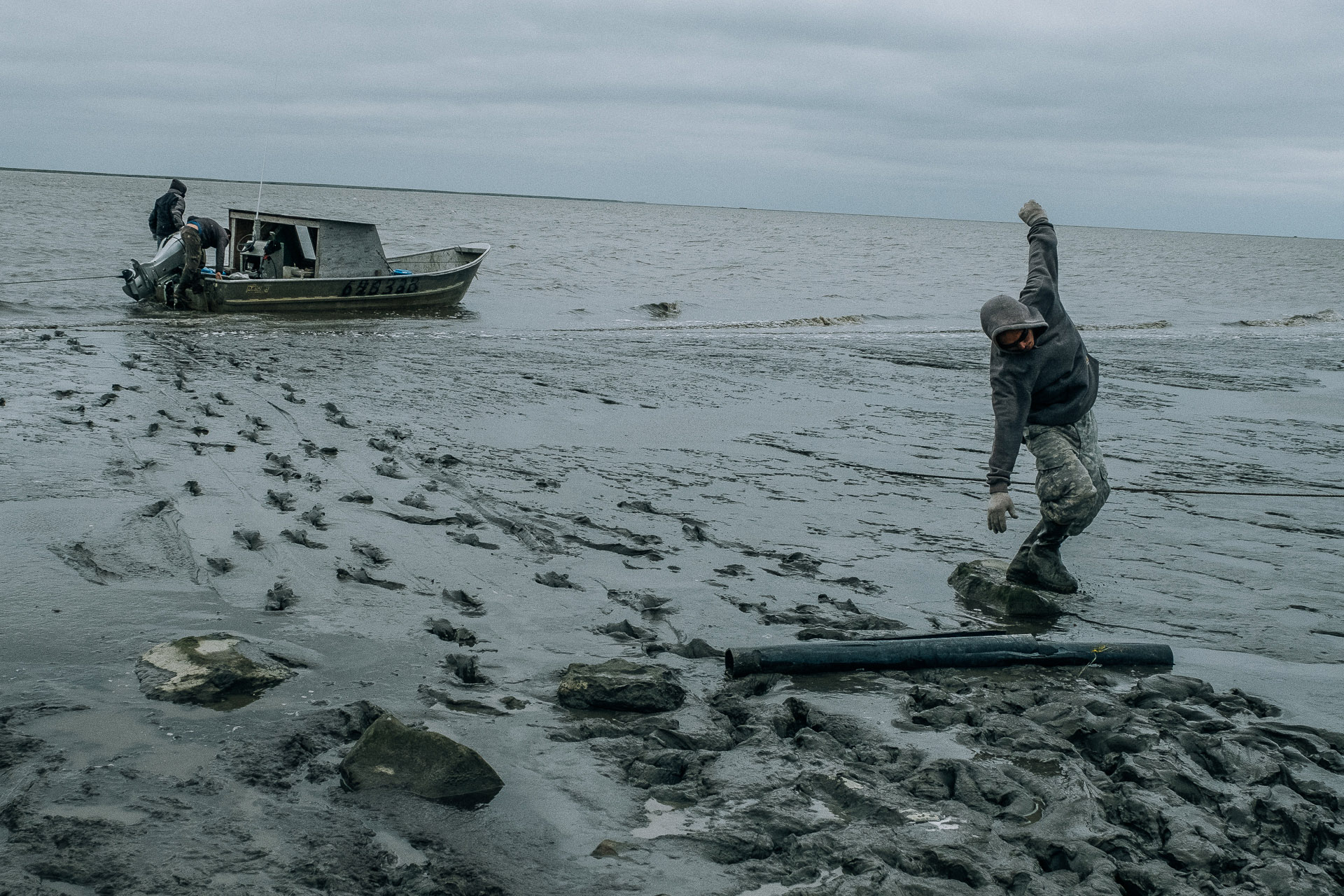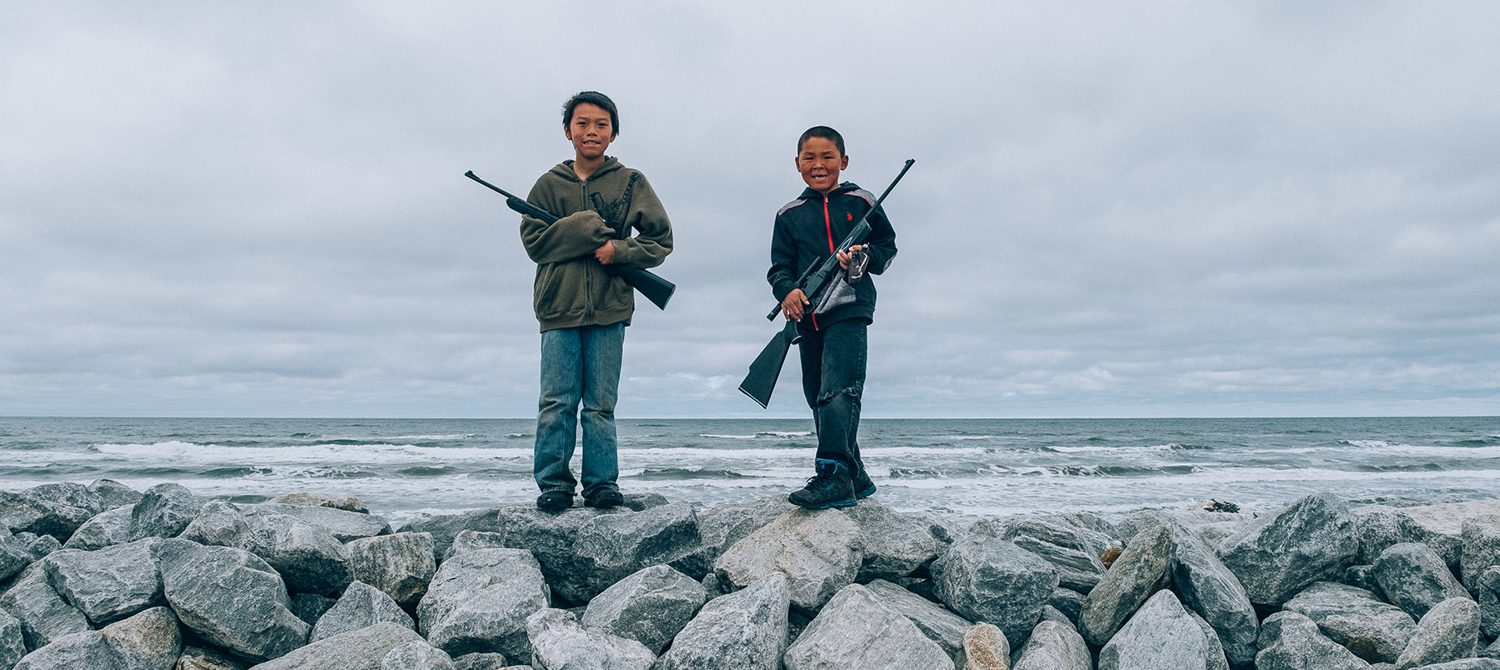
Alaska Diaries: To Stay in Shishmaref
Last week I happily reported all my flights to the far corners of Alaska are always on time. I must have jinxed it. After Newtok, I came to Nome, from where I was going to fly to the Gambell settlement on St. Lawrence Island. The settlement is located on the northeast end of the island, and when the weather is good you can see Chukotka from there. Gambell is populated by Siberian Yupiks, or Yuits. There is an agreement about visa-free travel between the island and several Siberian Yupik settlements on Chukotka. We left for Gambell as planned, early in the morning. Our first stop was the Savoonga settlement on the same island, nine out of ten passengers got out there. I had one more 10-minute flight to Gambell to go, but the pilot disappointed me with the news about heavy fog. We had to return back to Nome. The evening flight was canceled, the next day I couldn’t fly because of the fog either. I decided not to waste any more time and flew to Shishmaref, where I was going to head after Gambell. I hope to return to Gambell and Nome next year, especially since there are frequent charter Bering Air flights between Nome and Anadyr town and the Provideniya settlement in Chukotka.
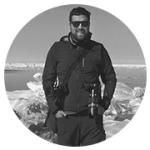
Born in Russia, lives in Portugal. Specializes in documentary photography, works for Panos Pictures. Works with the UN, Amnesty International, Oxfam, ChildFund, and UNICEF. Sokhin’s photographs have been published in The Guardian, National Geographic, GEO, International Herald Tribune, The Atlantic, The Global Mail, Internazionale, Stern, Le Monde, Paris Match, Marie Claire, BBC, Sydney Morning Herald, and in “The Russian Reporter” and “Around the World.” Published a photobook called Crying Meri about violence against women in Papua New Guinea.
Shishmarexit
We got to Shishmaref okay, despite heavy rain. From the top, the settlement reminded me of Kivalina, it is also located on a sandspit island separated from the mainland by a lagoon. Sarichef Island itself, together with the Iñupiat village, was first discovered in the early 19th century by a navigator, Otto von Kotzebue, who named the bay after his friend Gleb Sarichef. Later, the Eskimo village got the same name. In the late 20th century, all of America found out about Shishmaref when the settlement was hit by heavy storm and coastal erosion ate up the bigger part of the island. Then several books were written and a documentary was made about the impact of global warming in Shishmaref. The settlement even made it on the UN map of places most affected by the anthropogenic climate change. In 2002, people at the settlement decided to move Shishmaref to a different, safer place.
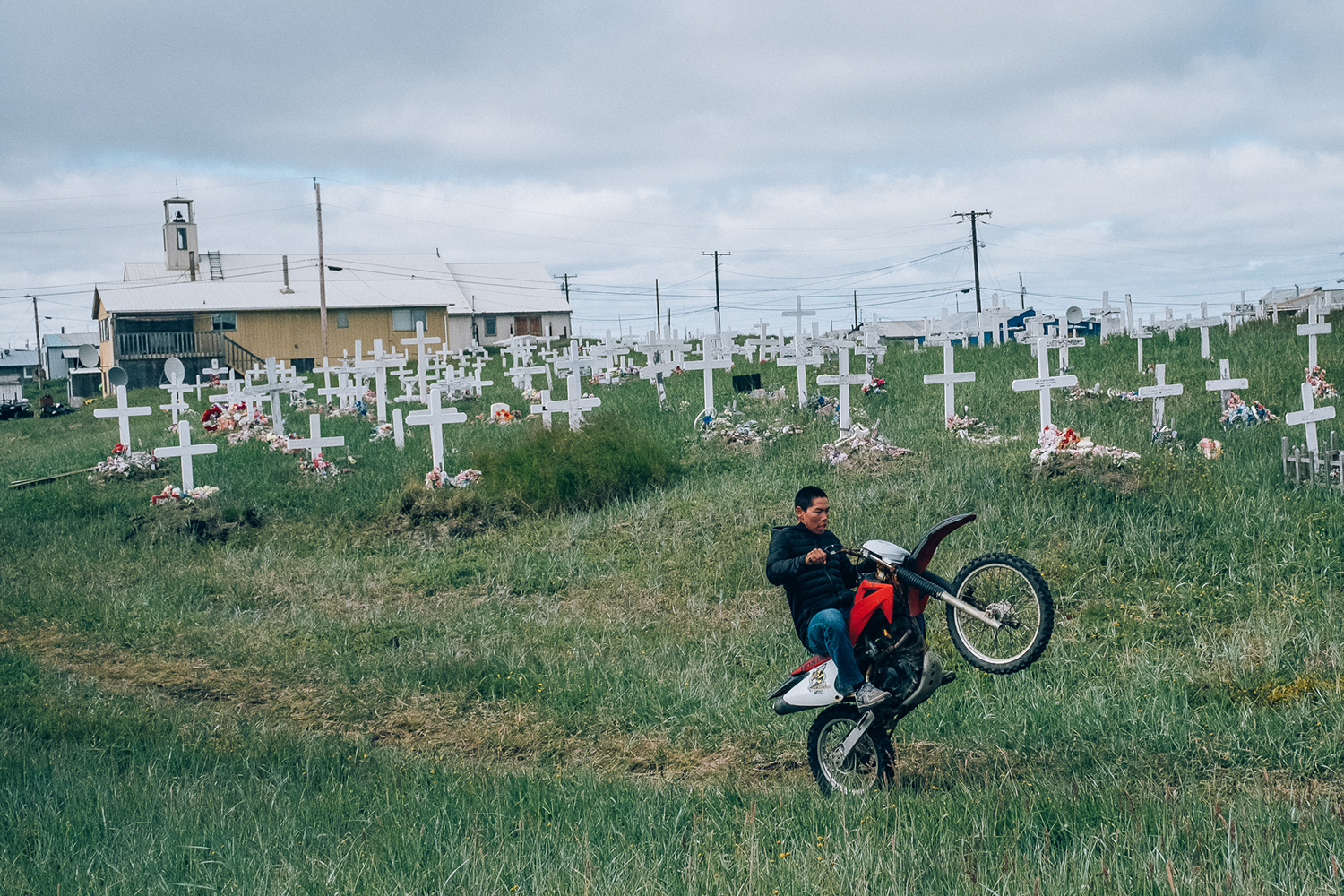
In 2016, the settlement still remains on the same island. The locations of a possible move, selected by the citizens 14 years ago, turned out to be pingo hills, also called hydrolaccoliths. They are mounds in the middle of the tundra that have frozen ice inside. Because of the intensifying of the melting of permafrost, climatologists think that such mounds are very unstable for moving the whole settlement. In Shishmaref, as in other villages that I visited, people encounter many problems related to moving. The lack of funding for moving the village and the fear of losing a flow of state funds for the everyday needs of the settlement further hinder this process. Another citizen vote on moving was scheduled in Shishmaref for the end of July. Global warming has affected even the referendum: it was prevented by berry-picking season, which started much earlier this year. Sharon Nayokpuk, head of the Shishmaref Environmental Program, says that they usually pick salmonberry in early July, after that blackberries, and nearer to August blueberries. This year, all three berries ripened in the tundra in early July. The whole settlement went to pick them, and the vote was postponed until August 16.
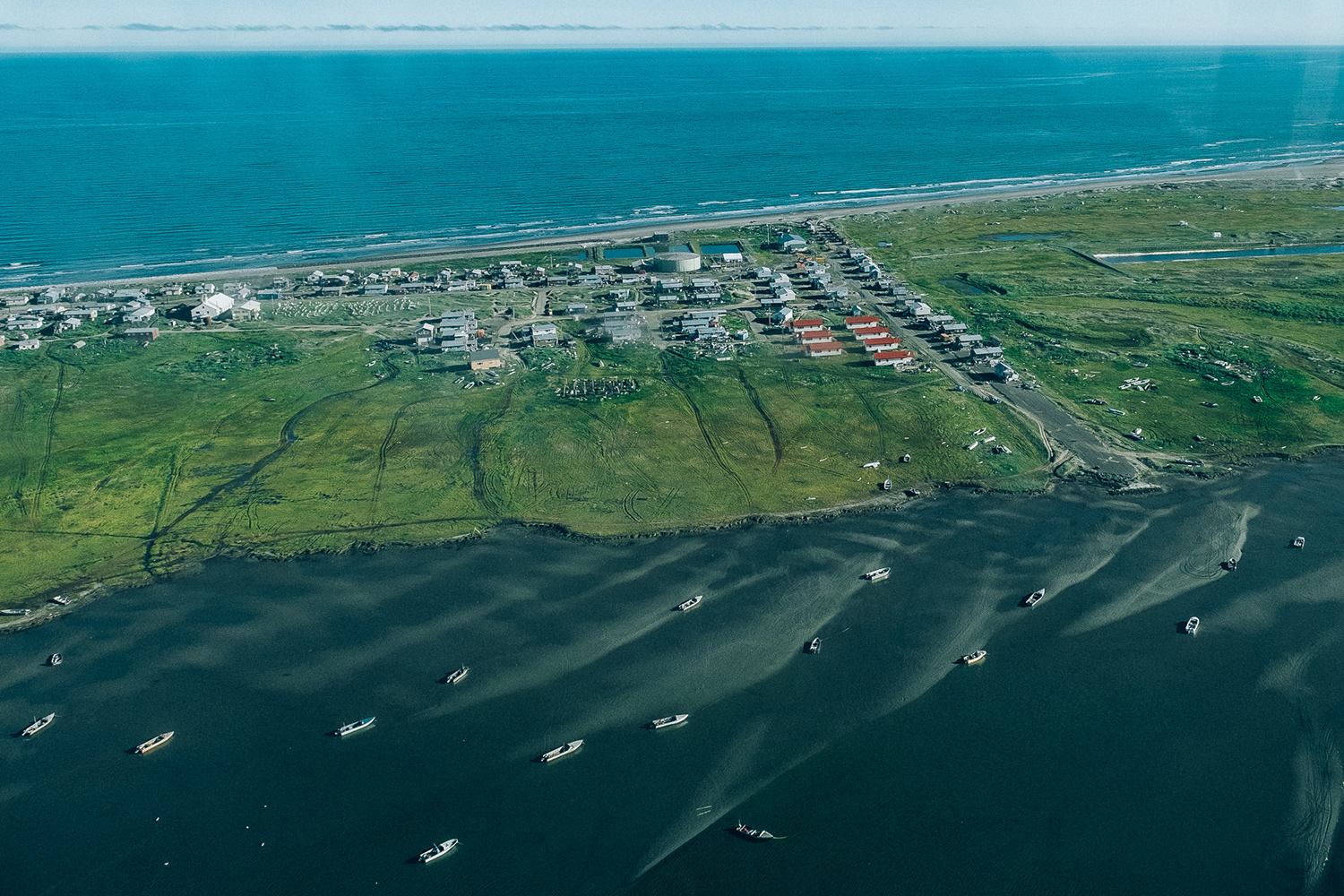
Although Shishmaref still has to decide whether to relocate the entire village or not, 14 families from the settlement have already become climate migrants. In October 1997, heavy storm hit the island, which was not yet protected by sea ice. The huge waves of the Chukchi Sea hit the shores which caused several houses to fall into the water. The others were almost destroyed, some of them hanging on the brink of a newly formed cliff, and became unsuitable for living. The photographs of the aftermath of that storm can easily be found on the Internet.
In early 1998, these houses were moved to a new place, the asphalt-paved runway of the airport that also suffered from erosion. Today, the planes are landing in a different location, on the other side of the island. Kate Kokeok (37) from Shishmaref recalls how her family’s house was moved from a dangerous zone. She was 19 at the time, the house was her grandmother’s. After the storm, the house of the Kokeoks was endangered and could fall into the sea. “In early 1998, the whole village was busy moving houses. We put them on large skis, and dragged them on ice to the airport with two tractors. We moved five houses a day, and in three days we were done. We decided to put our house near the church.”
It has been 18 years since but you can still see ruined wooden buildings, old equipment buried in sand, and beams of the houses that were washed into the sea sticking out of the crumbling soil on Sarichef Island.
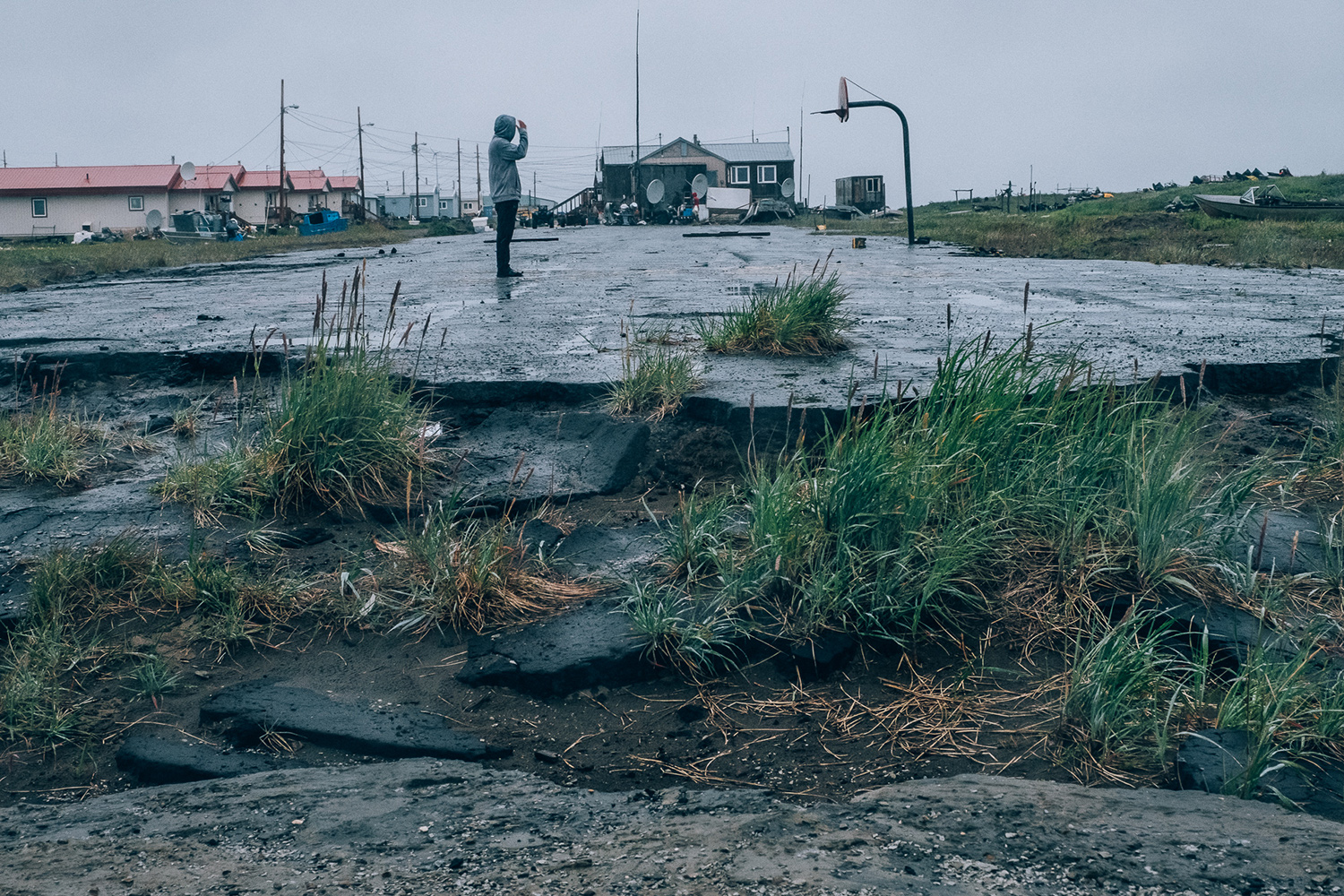
Cobblestones and Asphalt
The houses on the half-ruined old runway are very visible from the air. I met some of the people who live there, among them Shishmaref mayor Howard Weyiouanna. Although he is one of those who had to relocate because of the impact of global warming, the mayor opposes the further relocation of the whole settlement. He says that these are extreme measures and things are not that bad yet. He also says that when the village first voted for relocation, the inflow of funds to Shishmaref almost stopped. “We had to mend something at school, find the money for new houses for growing families, but nobody wanted to spend money for a settlement that has almost ceased existing.” This August, Howard will be voting to remain. “After another heavy storm in 2002, we built a large protective barrier from huge cobblestones that is currently protecting Shishmaref from high waves and coastal erosion,” he says.
The barrier (very similar to the one in Kivalina) really looks massive. It was built in 2004 by the same US Army Corps of Engineers and cost $2.2 million of state budget money. In a couple years, the large stones of the barrier sank down in the sand and they had to make it taller and longer, which cost another $6.5 million. The difference between the levels of 2004 and 2007 is well visible, in some places it reaches two meters. Just as in Kivalina, the barrier protects only the residential part of the village, and in all other places erosion continues to decrease the square area of the island: Sarichef loses about 3 meters of coastline annually.
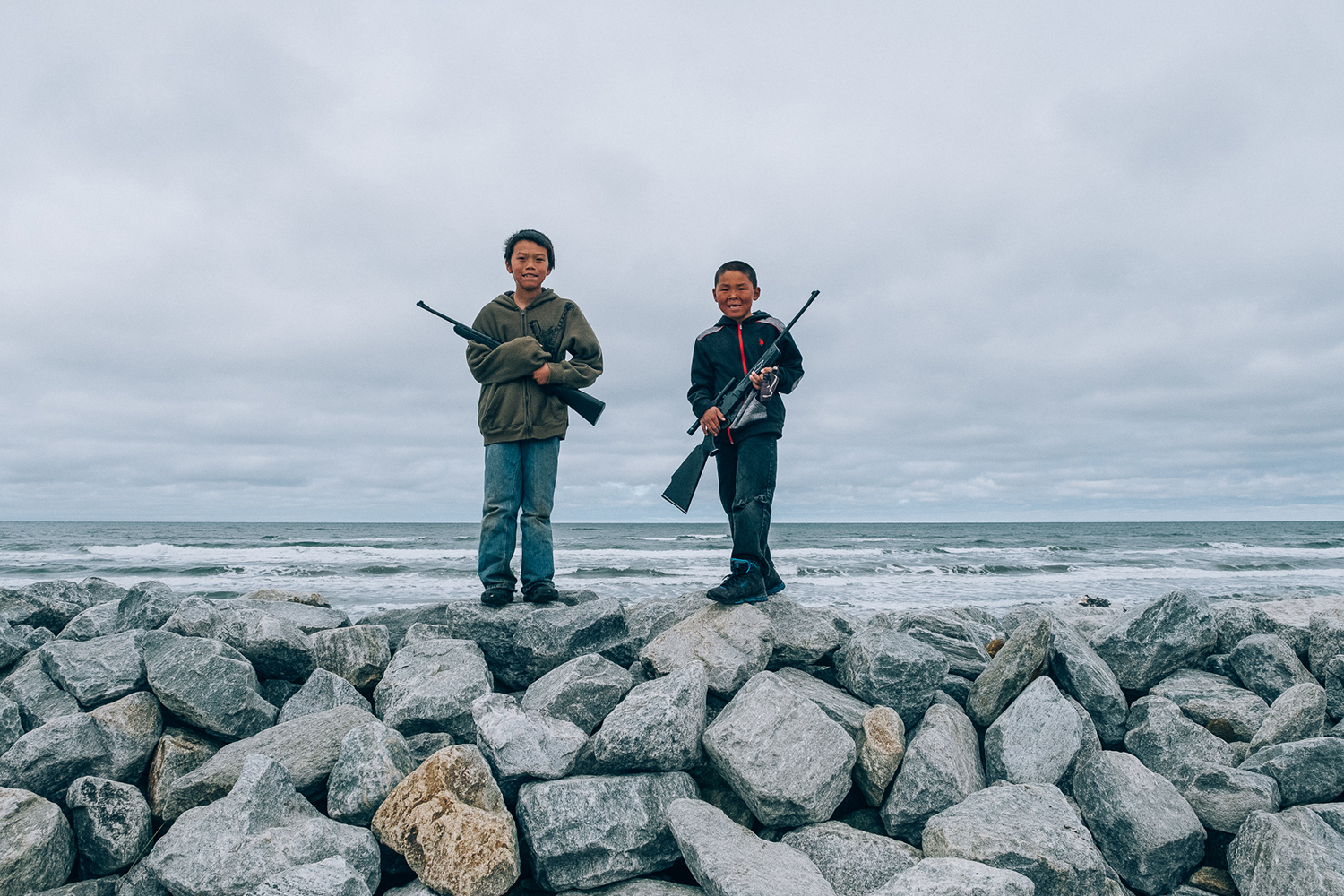
According to the US Army Corps of Engineers estimations, the relocation of the whole village will require allocating about $200 million from the federal budget. It will cost a little less to merge Shishmaref with Kotzebue or Nome, but the locals are not very excited with this perspective. Moving to a town will mean the end of their traditional Iñupiat way of life, which has been changed enough as it is during the last century. During my week in Shishmaref I talked to many locals, and 90% said they will vote to remain and continue to fortify the island to protect it from destruction. In one of Shishmaref shops I saw a handwritten appeal to the citizens to vote not to relocate. “Our people have lived and remained on this island. Let’s preserve our culture, language, and way of life. Improve life on the island, make it better! Vote for preserving this place, let’s stay to live in Shishmaref.”
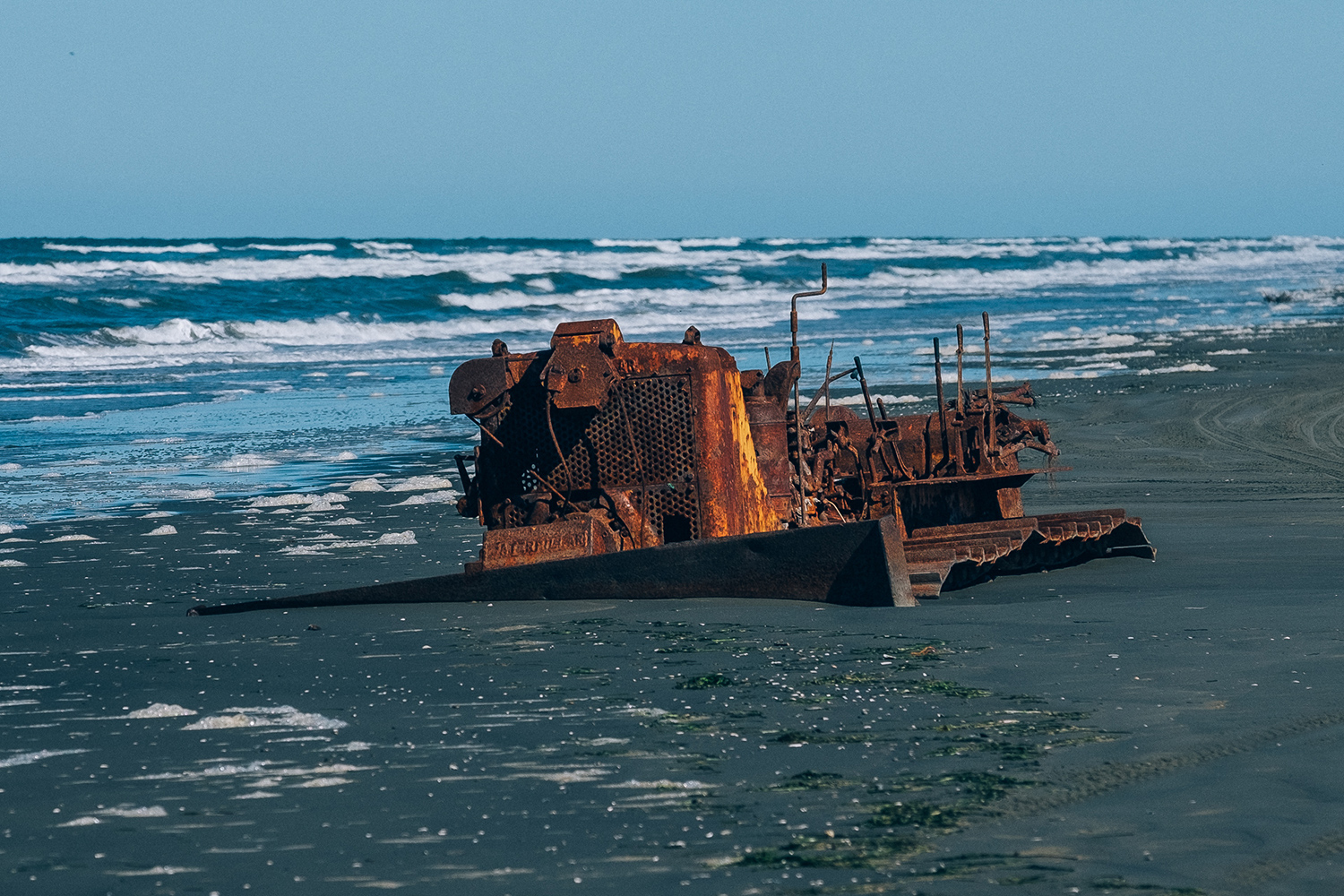
As if to evidence that people don’t want to relocate anywhere, tractors, bulldozers, and rollers keep driving around the three streets of Shishmaref, preparing the roads of the settlement for paving. Workers from Drake construction company are clearing the streets of sand that is deposited by strong winds. Trucks bring crushed stone to the settlement and strew it over the black rubber road lining. Another construction company is finishing laying asphalt on the runway of the new airport and will soon start paving the streets of Shishmaref. After spending about a month in different parts of Alaska and talking to many experts, I was downright surprised that the roads of the island that is in the permafrost area are going to be paved. The black surface of asphalt will heat the permafrost under the sand even more, which may cause the rapid destruction of the roads. In the future, it may influence the neighboring buildings that could sink in the thawed shaky ground.
The first road worker who I asked about it said that he was perplexed too — but he was only executing the job ordered by the authorities from the settlement. Sara Tocktoo, Head of the Shishmaref Native Corporation is also puzzled with this initiative by those in charge. “Nobody has asked us about it, we did not vote to have our roads paved with asphalt.” She says that it is not only about asphalt heating the soil: “Many drivers in Shishmaref don’t have the experience of driving all-terrain vehicles, now they will start driving faster and get into accidents. I am also concerned about the children who fall from their bikes all the time. It is one thing to fall on sand, and a different one to fall on asphalt.”
Mayor Howard Weyiouanna does not share these concerns. “Well-paved roads improve the life of the settlement,” he says. “Our island is made of sand, there is no permafrost under it.” It seemed to me that by covering Shishmaref in asphalt, the administration of the settlement is trying to secure its location on the map. Unfortunately, the practice shows that such roads will have a short life in Arctic conditions.
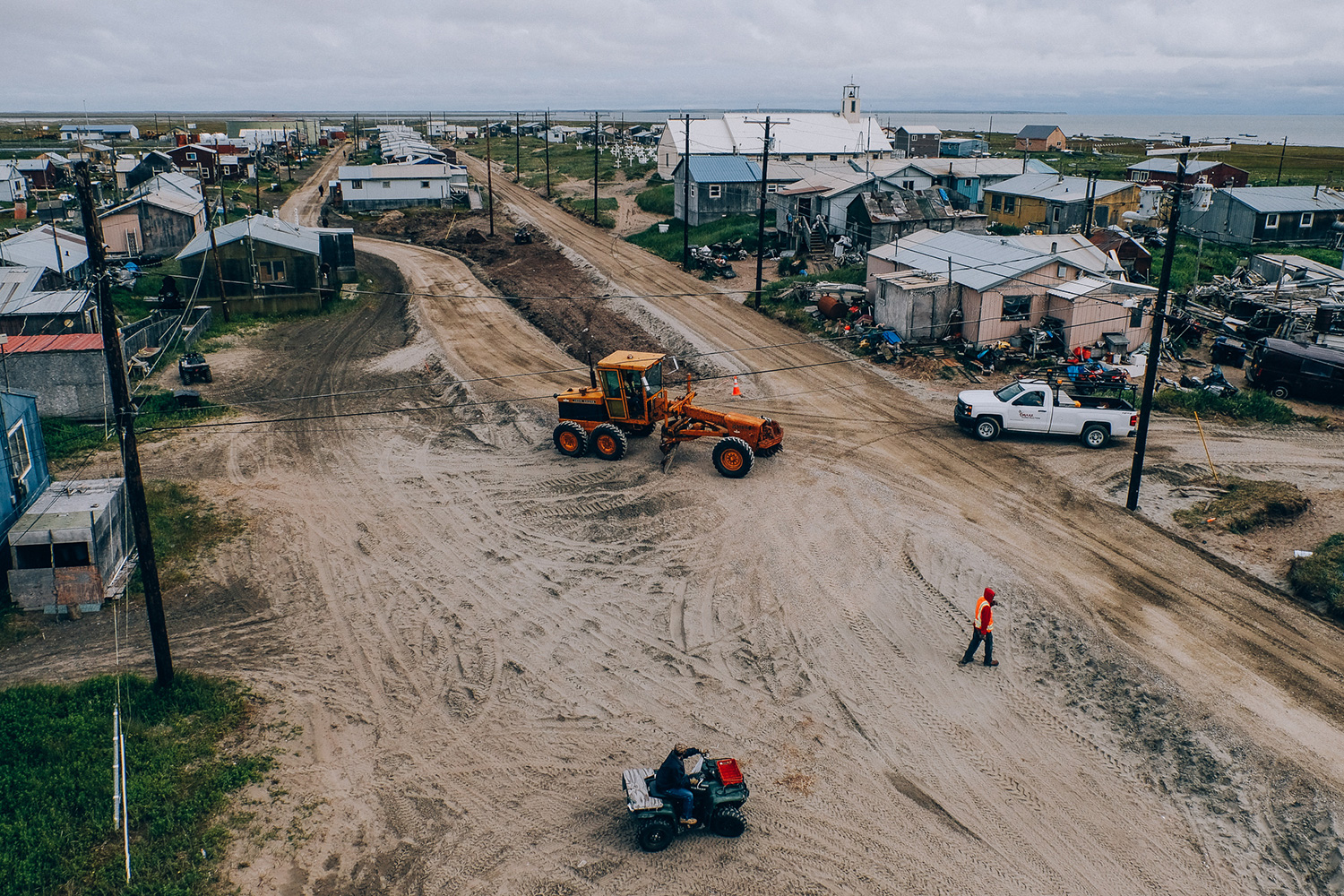
Marijuana and Bingo
Despite being close to Nome, a city known for its Wild West style bars, where the gold miners are still looking for gold, Shishmaref has a strict ban on alcohol. As in many other villages that enforce prohibition, you can go to jail here even for bringing in alcohol for personal use. A whisky bottle bought for several dozen dollars in Anchorage will cost $250 on the Shishmaref black market. In 2013, the citizens held a referendum to lift the ban, but the majority voted against it.
When asked how the locals are taking the edge off, a person of any sex or age in the settlement would smile and say: “We smoke pot.” During my time in the ‘dry’ villages of Alaska I saw lots of cannabis bushes that the locals grow at home like pot plants. Marijuana has been allowed in the state since 2014. Any citizen of the age of 21 can legally carry up to an ounce (about 28 grams) of grass and grow six plants at home. I have visited many places where youth and adults gathered to smoke. There is usually no wide announcement about this, but nobody was even against me taking pictures at those places. Some people joke that global warming has at least some positive impact on their lives: in the past several years, a short Arctic summer is enough for marijuana bushes to grow even in the street.
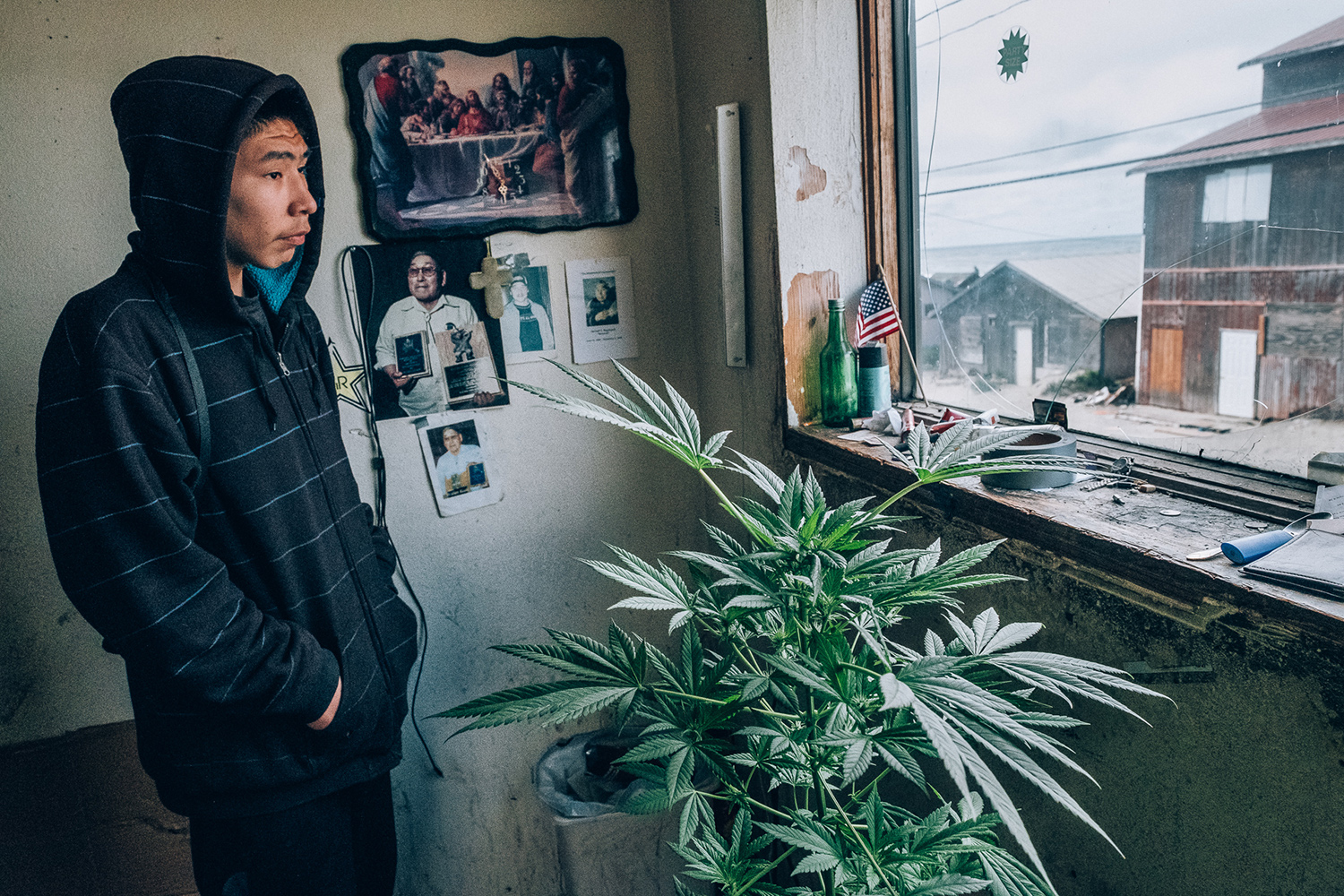
For the entire week, I live in Shishmaref school. Just as in the other settlements, it is the only place where guests can spend a night. It has a shower, a kitchen, and even Internet. Access to Facebook, YouTube, and Instagram is closed between 8am and 4pm, so as not to distract the children from studies and save the school’s money for expensive traffic. I have seen something similar in the other villages — for instance, in Kivalina even the VPN, which helped me easily circumvent the ‘Great Firewall of China’ in Beijing, didn’t work. Every morning, I wake up in a sleeping bag on the floor of the English language study room and go out for a walk. In the mornings Shishmaref is usually sleeping, as during the Polar day people usually go to sleep very late. Half of the settlement with a total population of about 700 people spends summers in the small camps in the tundra. Families cross the lagoon that separates Sarichef Island from the mainland in boats, and live there, picking berries, catching fish, and hunting deer and moose. Those who remain in Shishmaref maintain the life at the settlement, prepare the school for the new school year, work in the administration, shops, hospital, and a public bathhouse.
In the afternoon, the settlement comes back to life. Children dash out of the houses and start running around the streets, getting in the way of the bulldozers that are smoothing the roads. When the night approaches, adults go to a ‘bingo house’, where they play the eponymous game for money.
At night, I usually buy food in the local shop to cook my dinner and lunch for the next day. The choice here is scarce: rice, pasta, instant noodles, canned fish, frozen meat, and sweets — all for Arctic-high prices. By midnight I make myself go to bed to maintain my daily schedule. The sun is still shining bright, the children are screaming and shooting birds with air rifles — sleep doesn’t come easily. To be honest, I can’t wait till I finally catch up on sleep in a regular bed.
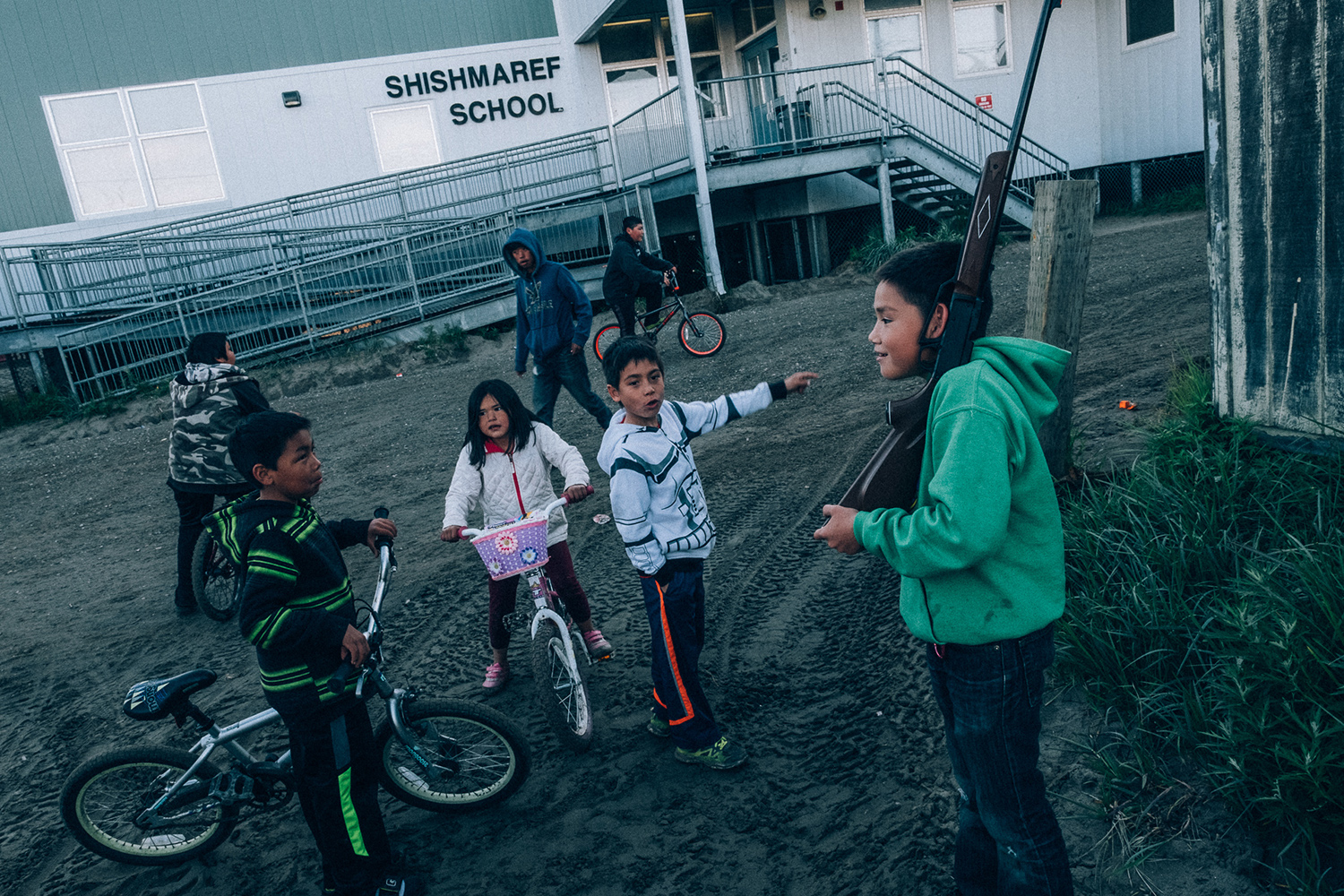
Although the settlement that is now called Shishmaref was founded over a thousand years ago, the locals here, just as in the other Alaskan villages, had to change their way of life because of the policies of white people. Colonial authorities have forcefully made the native population to live sedentary lives. A church on Sunday, playing bingo at night, going to the shop to get noodles and canned food became a routine not only for people in Alaska, but also for people in many other countries where I am working on a project about global warming. From Alaska to Kiribati and Niue, Eskimos and Polynesians are the first to pay for what the colonialists from rich industrial countries have already done and continue doing to the environment. Ask a person who lives on the disappearing island in the Pacific Ocean or and Alaskan Eskimo, if he believes in anthropogenic climate change. He most likely doesn’t know or confuses the scientific terms, but he will tell you that his ancestors have fished, hunted, and buried their dead here for generations. And that the graves are going under water, homes gradually disappear because of the rising ocean levels and unbelievably strong hurricanes, and there is less and less ice in the North each year. They may not be aware how much coal and oil we are burning each minute, but they will tell you that this year their dog sled could not take its usual route, because there was not enough snow, and a hunter they knew died because he fell under ice during the hunt, although in February the ice is usually so strong you could land planes on it. “The world we knew will never be the same,” they say, looking at the photographs of their ancestors. Some day, their lives will also become only a part of the photo archive.
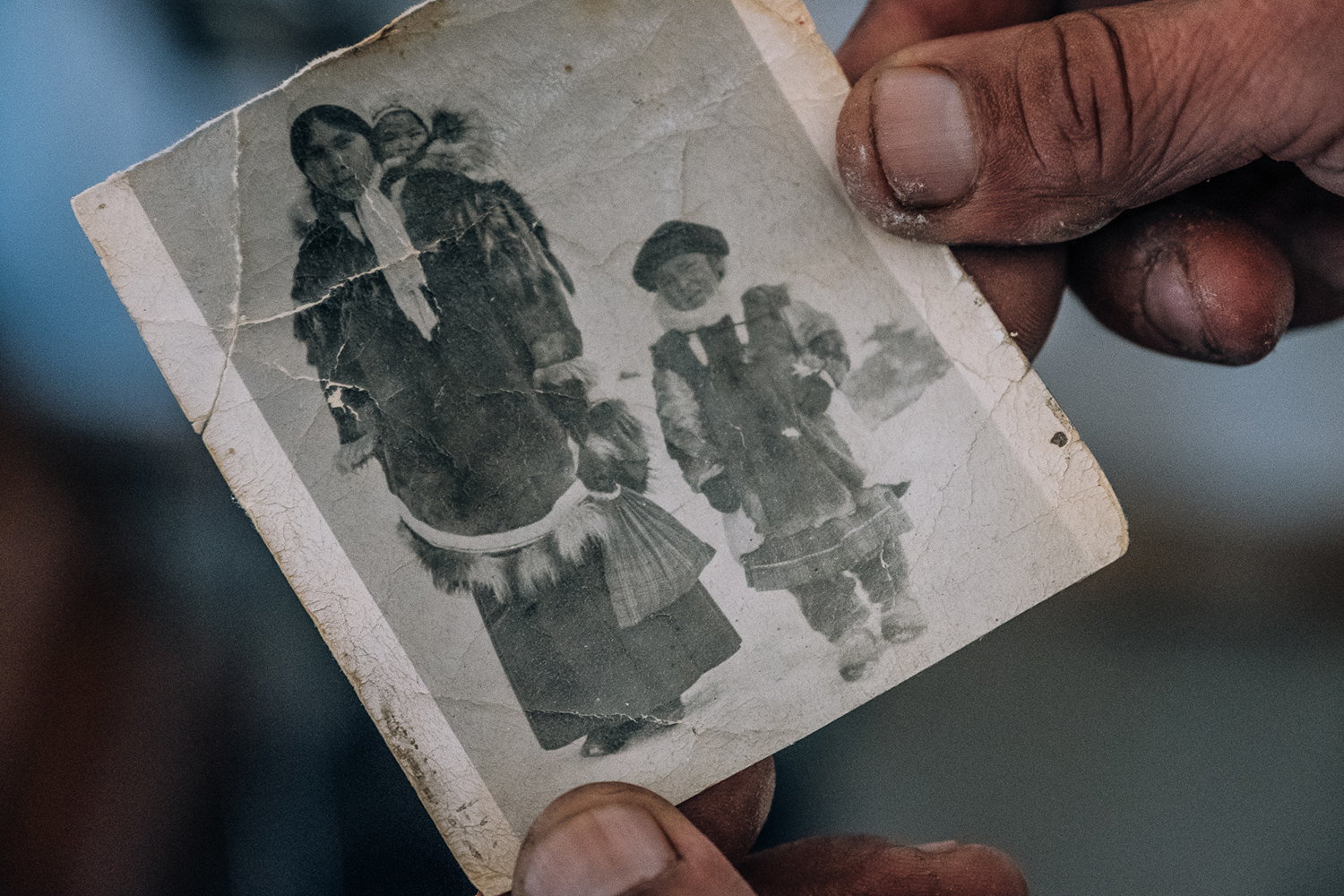
Shishmaref, or Qiġiqtaq in Eskimo language, became the last Eskimo village that I visited during this trip to Alaska. One of the centers of Iñupiat culture, famous for its woodcarvers, just as many other villages may soon be left by its native population. It is not my place to judge whether their desire to remain is right, but I was glad that the Inupiaq did not want to abandon their lands just like that. The next 20 or 30 years will show, whether people will be able to fight back nature and defend the right to live in the lands of their ancestors. I am now bidding farewell to the Arctic and flying to Anchorage. I will spend my last week in Alaska near Prince William Sound, where I will observe the melting of glaciers, and with any luck, the whales, brown bears, and other representatives of the Alaskan animal kingdom.
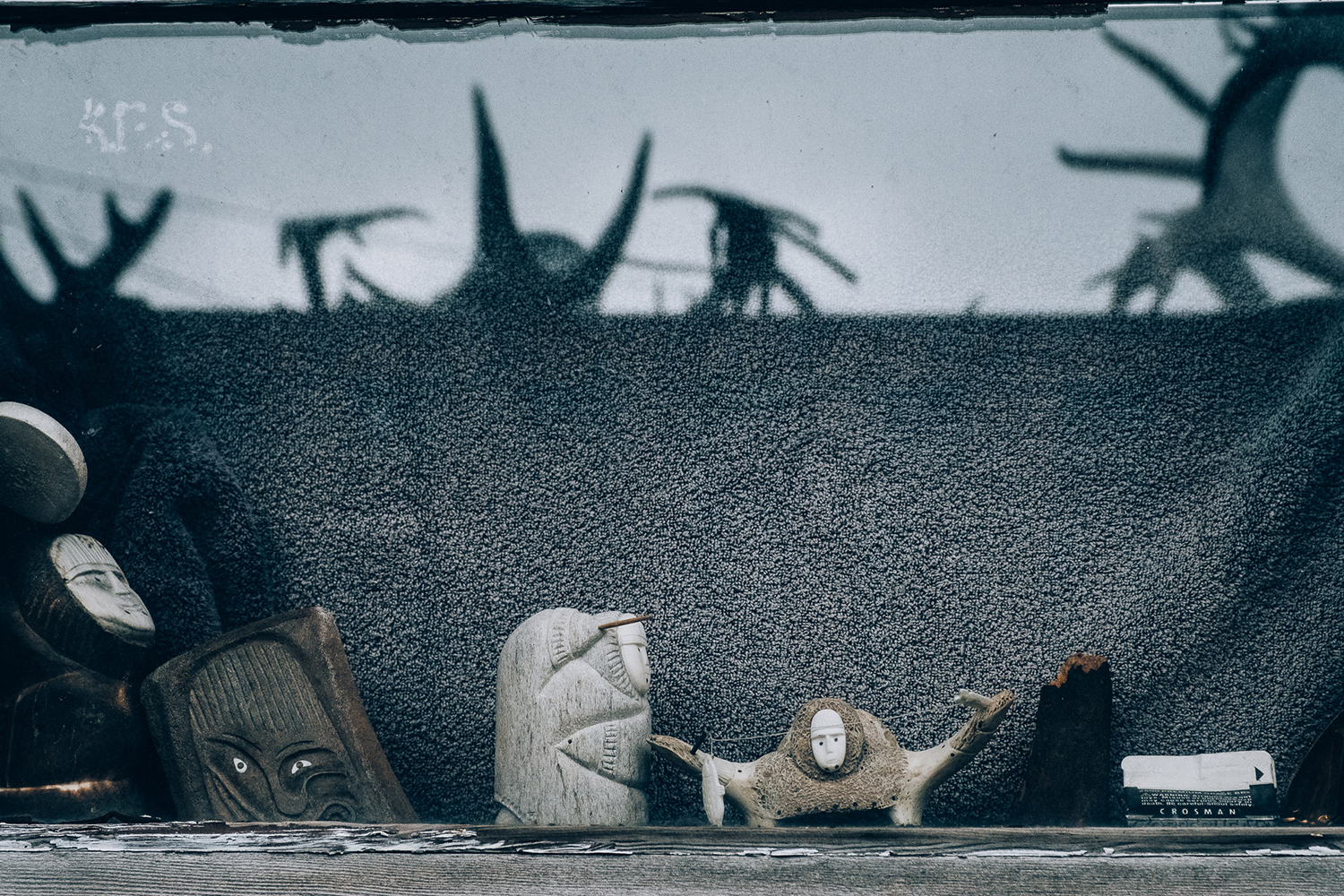
Text and photos: Vlad Sokhin / Panos Pictures
